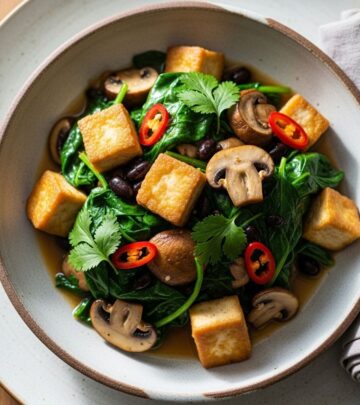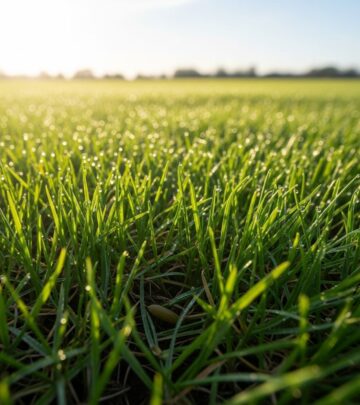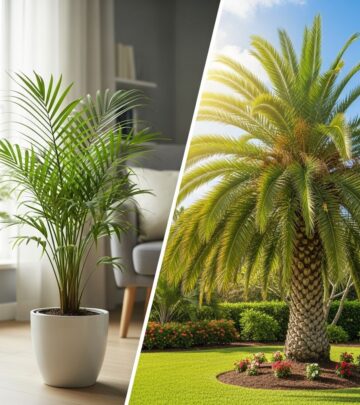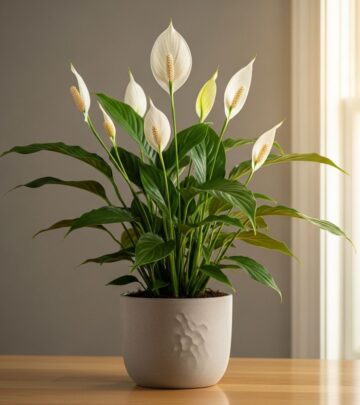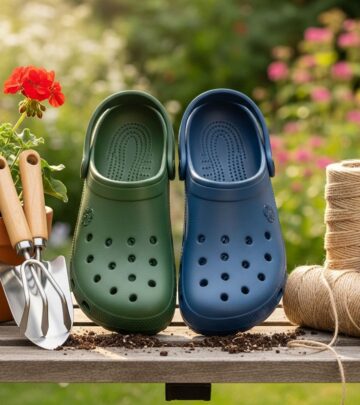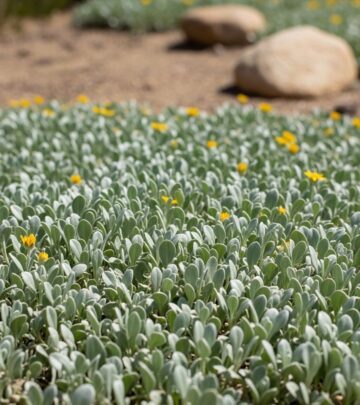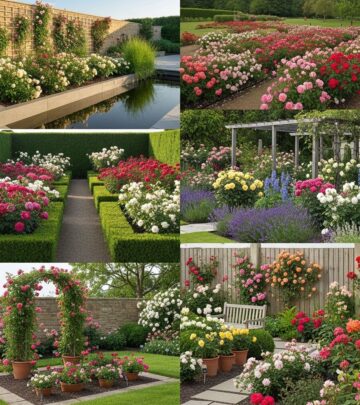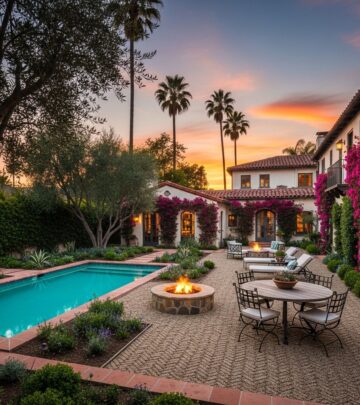10 Essential Japanese-Style Fences and Screens for Timeless Gardens
Crafted barriers that harmonize with nature and enhance outdoor tranquility.

Image: HearthJunction Design Team
Japanese gardens are treasured worldwide for their serene elegance and refined simplicity. Central to these landscapes are fences and screens, crafted not only for privacy or property boundaries, but also to shape views, filter light, and gracefully frame garden scenes. The following guide explores ten enduring styles of Japanese fences and screens, offering inspiration and practical ideas to help you incorporate these timeless elements into your garden design.
Understanding Japanese Fence and Screen Aesthetics
In Japanese design, fences and screens are never purely practical. Every joinery choice, material, and pattern serves a purpose—either symbolic, aesthetic, or both. Traditionally crafted from bamboo or wood, these structures are designed to compliment their surroundings and the changing seasons. Their forms often suggest impermanence, subtlety, and a deep sensitivity to nature’s rhythms.
Main Characteristics
- Natural materials: Bamboo and wood predominate, aged or charred for protection and depth of tone.
- Clever joinery: Traditional lashings and mortise and tenon joinery minimize the need for hardware, preserving a harmonious look.
- Visual play: Variations in width, height, or layering provide interest, dapple light, and create shifting shadows throughout the day.
- Regionally inspired: Many styles originated at Zen temples or are unique to particular Japanese regions, each with a cultural story.
The 10 Key Japanese Fence & Screen Styles
Kenninji-Gaki (Kyoto Zen Temple Fence)
The Kenninji-gaki is one of Japan’s most celebrated privacy fences. Originating at the Rinzai Zen temple in Kyoto, this fence features an elegant, grid-like lattice of horizontal and vertical bamboo elements. Its rhythmic simplicity evokes the impermanence of the seasons and a tranquil, almost meditative feeling in the garden.
- Materials: Bamboo, typically with thicker horizontal members and finer verticals.
- Features: Well-balanced, clean lines; ideal for establishing boundaries or serving as a screen behind plantings.
- Placement: Perfect beside stepping-stone pathways or as a backdrop for an inner courtyard.
Yarai-Gaki (Crisscross Lattice Fence)
The Yarai-gaki (or Yarai Style) fence is popular in the Kansai region as both a property border and ornamental element—especially atop low stone walls. Characterized by a distinct diagonally crisscrossed pattern, the yarai evokes movement and dynamic energy while still feeling open and light.
- Construction: Sturdy bamboo posts, horizontal crosspieces, and diagonals lashed—sometimes tightly wired for security then lashed with black cord.
- Proportion: Usually around 3 feet high but easily varied for site needs.
- Setting: Works beautifully to edge gravel paths or mark transitions between different areas of a garden.
Shimizu-Gaki (Slender Bamboo Screen)
The Shimizu-gaki is known for its remarkably thin, vertical bamboo poles, offering subtle enclosure while maintaining airiness and light. Its greatest charm lies in the delicate proportions: the verticals are only about 1-inch thick, making the fence appear almost weightless and ethereal.
- Appearance: Fine verticals with minimal cross-bracing, often framed by slightly thicker bamboo or wood.
- Suitability: Elegant as a privacy screen near teahouse pavilions or as a refined frame for specimen plantings.
- Note: The slim bamboo requires careful maintenance but repays the effort with unmatched grace.
Yotsume-Gaki (Four-Eyed Fence)
Yotsume-gaki (literally “four eyes” fence) is a traditional openwork style using narrow horizontal bamboo rails spaced proportionally along sturdy vertical posts. The moderate spacing provides visibility, making it especially suited for dividing areas within a larger garden.
- Design: Alternating rails and spaces, the resulting grid casts beautiful shadows that shift with the sun.
- Application: Often used along walkways or to subtly guide visitors through a garden’s layout.
Kinkakuji-Gaki (Golden Pavilion Fence)
Kinkakuji-gaki, inspired by the renowned Golden Pavilion in Kyoto, features robust, split bamboo mounted vertically and accentuated with horizontal bamboo caps over charred wood posts. This refined fence design offers durability with a distinctly ceremonial appearance.
- Materials: Large-diameter bamboo splits, charred sugi cedar, or hinoki cypress for structure and longevity.
- Effect: Strong, stately verticals balanced with horizontal cover pieces.
- Use: Perfect for lending a sense of grandeur to garden entrances or as an architectural focal point.
Stockade Bamboo Fence
This robust style layers thin, planed bamboo splits in a back-to-back arrangement, set against charred wood posts. The distinctive feature is its diagonal orientation of poles on horizontal supports, providing both texture and effective screening.
- Benefits: Highly durable, with a rustic charm and good privacy.
- Enhancements: Use thick, curved split bamboo pieces as cover elements for an inviting look.
Rifle Barrel Fence (Security Fence)
The Rifle Barrel fence is a clever security design, allowing for discreet observation of anyone approaching. Alternating vertical bamboo sections are mounted to horizontal stringers with distinctive table lashing, producing gaps for visibility from one side while obscuring the other. This method creates a strategic, protective barrier well-suited for garden gateways and perimeter fencing.
- Features: Alternating lashing technique enables selected vistas through the fence without inviting prying eyes from outside.
- Construction: Often built at premium cost ($65/ft or more with additional supports), emphasizing quality craft.
Shou Sugi Ban (Charred Wood Fences)
Shou Sugi Ban (or Yakisugi) fences use ancient Japanese techniques of charring cypress planks to create weatherproof, beautiful surfaces with a striking, ebony hue. These fences blend tradition with innovation, lending a sense of permanence and deep contrast against the vibrant greens of garden settings.
- Looks: Charred planks can be built as shadowbox, basketweave, or flat board fences, making them versatile for modern and traditional gardens alike.
- Finishing: Natural, oiled, or contrasting posts create different visual effects.
- Durability: The charring process adds decades of weather resistance and deters pests.
Bamboo Panel & Trellis Screens
Bamboo trellis screens, available in various latticed or woven designs, are staples in Japanese gardens for filtering views and training vines. These can be used freestanding, within a fence framework, or as movable garden partitions.
- Styles: Diamond patterns, grid lattice, or checkerboard layouts are common.
- Versatility: Use to frame windows, accent water features, or add structure to open spaces.
- DIY Potential: Many designs are simple enough for home construction and adaptable for diverse applications.
Shoji Screens (Sliding Paper Panels)
The famed Shoji screen is a delicate, interior or exterior sliding panel made from wood lattice and translucent washi paper. While not usually a fence per se, shoji screens are crucial to the modular boundaries of Japanese dwellings and open-air rooms, helping to create a gentle separation from the world beyond.
- Materials: Hinoki wood or cedar frame, washi or rice paper infill.
- Atmosphere: Diffuses sunlight, softens the room, and imparts calm and privacy without visual heaviness.
- Use: Ideal for verandas, entryways, or even as a dramatic accent in open-plan garden cottages.
Materials and Building Techniques in Japanese Fencing
Japanese fence construction is revered for its precision and attention to detail. Below is a table summarizing the most common materials and methods used, and their typical applications:
| Material / Method | Attributes | Typical Use |
|---|---|---|
| Bamboo (whole, split, lathe) | Lightweight, flexible, sustainable; weathers to soft hues; must be maintained. | Virtually all classic styles; privacy screens; trellises. |
| Charred timber (Yakisugi / Shou Sugi Ban) | Resistant to rot, pests, and fire; striking dark color; low-maintenance. | Posts, rails, and slats for stockade, basketweave, and flat panel fences. |
| Lashing Cord (natural or synthetic) | Binds joints invisibly; black for tradition, natural for modern minimalism. | Lattice fences, overlapping element fences, trellis assembly. |
| Washi or Rice Paper | Glows in sunlight, delicate, not weather resistant (for interiors/exteriors with protection). | Shoji and interior/exterior screens. |
| Mortise and Tenon Joinery | Strong, hardware-free connections; emblematic of Japanese timber craft. | Sturdy fences, gates, and trellis structures. |
Choosing the Right Japanese Fence or Screen for Your Garden
The best style depends on your site, purpose, and personal taste. Consider:
- Privacy needs: Closed or semi-closed designs like Kenninji-gaki, Yarai, or Stockade are best for screening views.
- Visual openness: Yotsume-gaki, bamboo lattice, and rifle barrel fences preserve vistas and invite interaction.
- Materials: Bamboo weathers beautifully but requires care. Charred woods offer a more permanent option and dramatic color contrast.
- Budget & DIY: Many bamboo and lattice designs can be built at home with basic woodworking tools.
Tips for Installation and Maintenance
- Set posts deeply and use gravel for drainage to prolong the lifespan of bamboo or wood elements.
- Use traditional black lashing cord to disguise wire joins and reinforce critical points.
- Apply oil or eco-friendly preservatives (for both bamboo and charred woods) to increase resistance to weathering, especially in humid climates.
- Inspect regularly—replace or repair splintered, cracked, or weathered pieces seasonally.
- For shoji panels, use protected locations or replace washi with durable acrylic if exposure is expected.
Frequently Asked Questions (FAQs)
Q: Which Japanese fence design is best for privacy?
A: The Kenninji-gaki and Stockade bamboo fences are renowned for providing excellent privacy without sacrificing a refined, elegant look.
Q: How long do bamboo fences last?
A: With proper installation and maintenance, bamboo fences can last 5–10 years; charred posts, regular oiling, and lashings prolong their service life.
Q: Can I make a Japanese garden fence myself?
A: Many classic designs, such as Yarai and bamboo panel trellis, are well suited to DIY builds using basic garden tools and patience for precise joints.
Q: What maintenance do these fences require?
A: Regularly inspect for rot, insect damage, or loosening lashings. Oil wooden and bamboo elements to combat weathering. Quickly replace compromised elements to prevent rapid decay.
Q: How can I use Japanese screens indoors or on patios?
A: Shoji and bamboo panel screens are perfect for softening spaces, dividing rooms, or adding privacy to porches. For exterior use, swap paper for durable acrylic or polycarbonate.
Japanese Fences & Screens in Contemporary Landscapes
These enduring Japanese fence and screen styles adapt seamlessly to both traditional and modern gardens, offering a blend of privacy, visual drama, and natural beauty. Whether you aspire to the tranquility of a Zen courtyard or the intimacy of a bamboo enclave, choosing the right fence or screen can transform your landscape, inviting contemplation, and a sense of place, season after season.
References
- https://www.gardeners.com/how-to/diy-bamboo-fences-and-trellises/5162.html
- https://onethatch.com/blog/enhance-your-garden-with-traditional-japanese-bamboo-fences-styles-tips/
- https://nakamotoforestry.com/shou-sugi-ban-fencing-and-japanese-ko-ushi-privacy-screens/
- https://www.austinbamboofencing.com/japanese-fence-designs/
- https://www.gardenista.com/posts/10-easy-pieces-japanese-style-fences-and-screens/
Read full bio of Srija Burman


